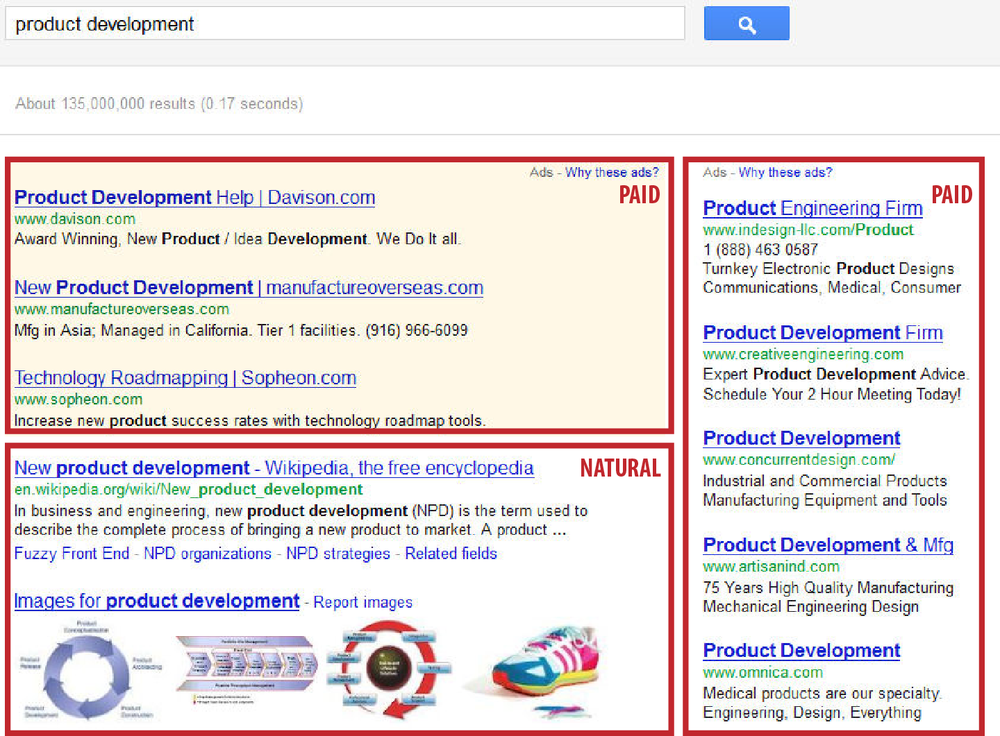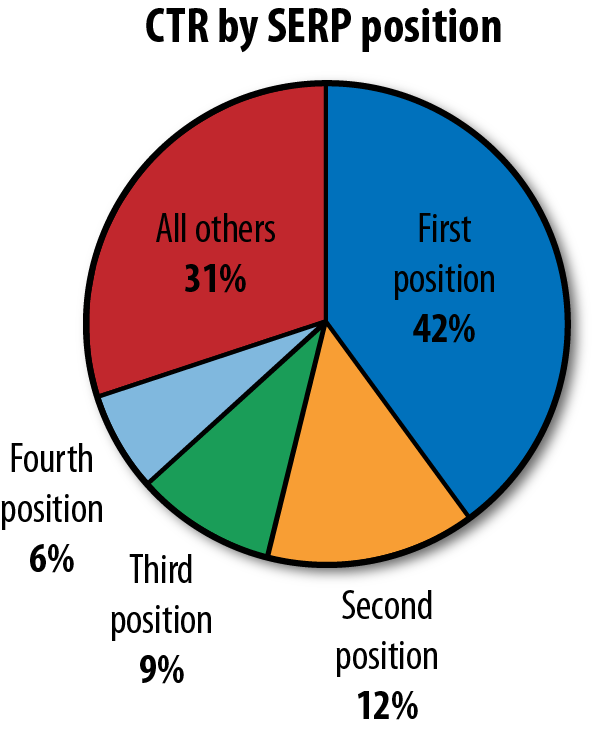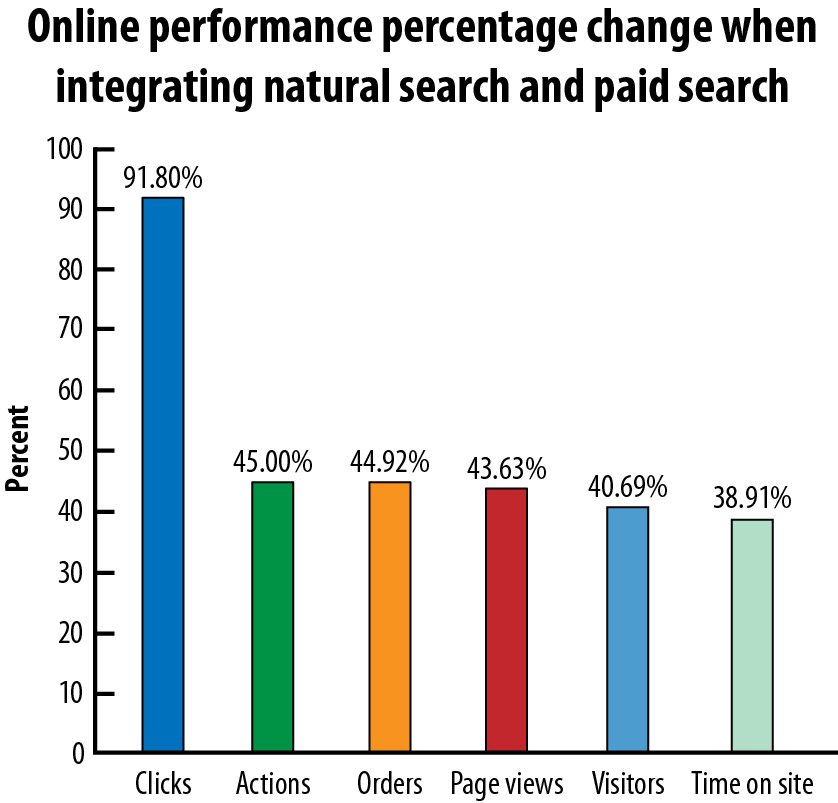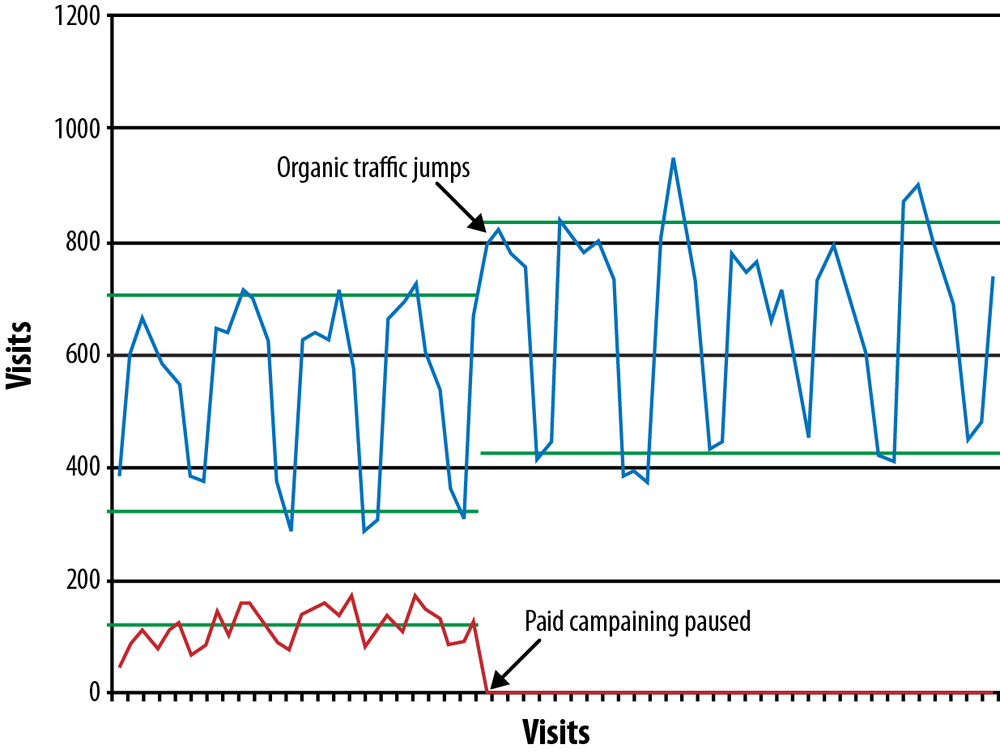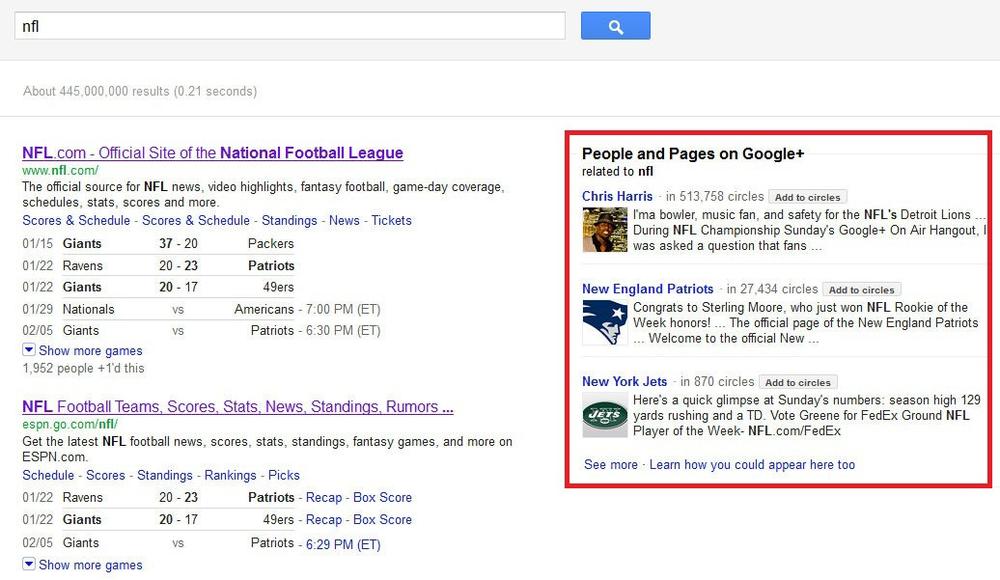By now, you should be convinced that you want to be on the top of the SERPs. It never hurts to be #1 in the natural search results.
In contrast, data shows that you may not want to be #1 in the paid search results, because the resulting cost to gain the #1 position in a PPC campaign can reduce the total net margin on your campaign. A study released by AdGooroo in June 2008 (http://www.adgooroo.com/how_keyword_length_and_ad_posi.php) found that:
Bidding for top positions usually makes financial sense only for high-budget, brand-name advertisers. Most other advertisers will find the optimal position for the majority of their keywords to lie between positions 5–7.
Of course, many advertisers may seek the #1 position in paid search results, for a number of reasons. For example, if they have a really solid backend on their website and are able to make money when they are in the #1 position, they may well choose to pursue it. Nonetheless, the data from the survey suggests that there are many organizations for which being #1 in paid search does not make sense.
Even if your natural ranking is #1, you can still increase the ranking page’s click rate by having a sponsored ad above it or in the righthand column. The AdGooroo survey showed that having a prominent paid ad on the same search results page makes your #1 natural ranking receive 20% more clicks.
To start breaking this down a bit, Figure 1-11 shows the screen real estate occupied by the two types of search results. This screenshot was taken prior to Google’s January 2012 Search, plus Your World announcement, but is the type of screen layout related to studies that will help us understand which portions of the search results receive the most clicks.
This example from Google shows how the paid results appear above and to the right of the natural search results. Note that Google often does not show paid results above the natural results, in which case the paid results show up only on the right.
Your position in the results has a huge impact on the traffic you will receive. Studies on the impact of SERP position have shown widely varying results, but do agree that the advantage of higher positions is significant. Figure 1-12 shows the results from AOL data released in 2006 (http://www.webuildpages.com/jim/click-rate-for-top-10-search-results/).
In addition, the first 10 results received 89.71% of all click-through traffic; the next 10 results (normally listed on the second page of results) received 4.37%, the third page 2.42%, and the fifth page 1.07%. All other pages of results received less than 1% of total search traffic clicks.
A study on click-through rate by search position done by Cornell University (http://www.cs.cornell.edu/People/tj/publications/granka_etal_04a.pdf) showed similar results, but with an even higher skew toward the first position, with the first result getting 56.36% of the clicks.
Why are searchers blind to relevant results farther down the page? Is this due to the “implied endorsement” effect, whereby searchers tend to simply trust the search engine to point them to the right thing?
According to the Cornell study, 72% of searchers click on the first link of interest, whereas 25.5% read all listings on the first page and then decide which one to click. Both effects (implied endorsement and rapid cognition) most likely play a role in searcher behavior.
The AOL data in Figure 1-12 demonstrated that natural results get the lion’s share of clicks. Further data from the Enquiro, Didit, and Eyetools eye-tracking study shows which organic results users notice when looking at a search results page (see Table 1-6).
Table 1-6. Visibility of natural search results
Rank | Visibility |
|---|---|
1 | 100% |
2 | 100% |
3 | 100% |
4 | 85% |
5 | 60% |
6 | 50% |
7 | 50% |
8 | 30% |
9 | 30% |
10 | 20% |
Similarly, Table 1-7 shows the percentage of users that look at each of the top paid results when viewing a search results page.
Notice this data shows that the visibility of a listing in the natural results is double or more (up to six times) of the visibility of the same position in the paid results. For example, only 60% of users ever even notice the natural search result in position five, but the paid search results fare even worse, with only 10% of users noticing the result in the fifth position. With the advent of Search, plus Your World, the visibility of the paid search results is even further reduced. Paid search advertisers will have increasing incentive to appear in the paid results that appear above the organic results, and advertisers that do not appear there are likely to receive even less traffic.
Here are some additional things to take away from the Enquiro et al. study:
85% of searchers click on natural results.
The top four sponsored slots are equivalent in views to being ranked at 7–10 in natural search in terms of visibility and click-through.
This means if you need to make a business case for natural search, assuming you can attain at least the #3 rank in natural search for the same keywords you bid on, natural search could be worth two to three times your PPC results.
Clearly, the PPC model is easier for companies to understand because it is more similar to traditional direct marketing methods than SEO is. The return on investment (ROI) of PPC campaigns can be tracked and demonstrated more reliably than that of SEO campaigns; thus, to date it has been considered more accountable as a marketing channel. However, as budgets are tightening and the focus is shifting to the highest ROI search investments, the focus is increasingly on SEO.
iCrossing published a report in 2007 (http://www.icrossing.com/icrossing-search-synergy-report-natural-paid) that showed a strong synergy between natural and paid search. The study shows what happens when you incorporate natural search into an existing paid search campaign and compare its performance to the performance of the paid search campaign on its own. Figure 1-13 summarizes the improvement in the results.
The marked improvement in click-through rate intuitively makes sense. For years marketers have known that the number of impressions a consumer is exposed to will have a dramatic effect on metrics such as retention and likelihood to buy. Google’s January 2012 announcement and release of Search, plus Your World will, of course, impact this significantly. It will provide marketers with three different opportunities to create an impression on the user, in the organic results, the paid results, and the Google+ Brand Pages results on the top right of the SERPs.
A search page provides you with more than one opportunity to put your name in front of the user. You should take advantage of this if you can. It is also useful to understand the difference between natural and paid search. Although some users do not understand the distinction between natural search results and paid search results, it is a common belief in the industry that the majority of users recognize paid search results as advertisements.
However, this viewpoint is not universally accepted. Stephan Spencer wrote an article for Search Engine Land that showed the results of an SEO campaign that had a PPC campaign running. As shown in Figure 1-14, organic search traffic went up when the PPC campaign was turned off.
Google also did a study on this, published in July 2011, that showed that organic search traffic did go down when a PPC campaign was also in effect, but that the combination of the organic plus paid search traffic was higher (http://searchengineland.com/google-study-ppc-ads-do-not-cannibalize-your-organic-traffic-86972). One can also expect that it will take time for searchers to fully understand what the Google+ Brand Page results are, and how they differ from the organic and paid results. Figure 1-15 shows an example of a Google result including Brand Pages.
Get The Art of SEO, 2nd Edition now with the O’Reilly learning platform.
O’Reilly members experience books, live events, courses curated by job role, and more from O’Reilly and nearly 200 top publishers.
